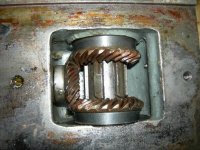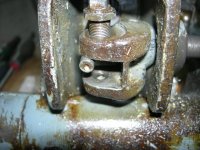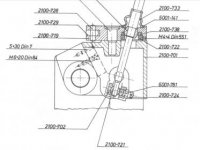bentley1930
Hot Rolled
- Joined
- Mar 30, 2015
- Location
- norway oslo
Hi All,
I`ve stripped down my FP1 into large lumps and this has toned up my aged muscles no end!
In a previous thread where I asked for information about how to identify the parts that were missing from my slow feed system, I jumped through all the hoops and shelled out on Alan`s DVD but the info that I needed was not there on the parts lists as these did not show the operating mechanism clearly enough and gave no part numbers either.
I think that I`ve found the root of the problem on the lack of slow feeds the reason being that the drive to the X axis slow feed has seized up in the saddle casting and as I can`t rotate the bevel driving gear I cannot drive out the pin to release it.
Can anyone give me some advice as to how to remove these parts from the saddle?
I enclose some photos to show the state of affairs. the first two show the empty space where the change X axis direction parts should be.





The last photo shows that there is a part missing from the gear lever lower end.
Alan
I`ve stripped down my FP1 into large lumps and this has toned up my aged muscles no end!
In a previous thread where I asked for information about how to identify the parts that were missing from my slow feed system, I jumped through all the hoops and shelled out on Alan`s DVD but the info that I needed was not there on the parts lists as these did not show the operating mechanism clearly enough and gave no part numbers either.
I think that I`ve found the root of the problem on the lack of slow feeds the reason being that the drive to the X axis slow feed has seized up in the saddle casting and as I can`t rotate the bevel driving gear I cannot drive out the pin to release it.
Can anyone give me some advice as to how to remove these parts from the saddle?
I enclose some photos to show the state of affairs. the first two show the empty space where the change X axis direction parts should be.





The last photo shows that there is a part missing from the gear lever lower end.
Alan










